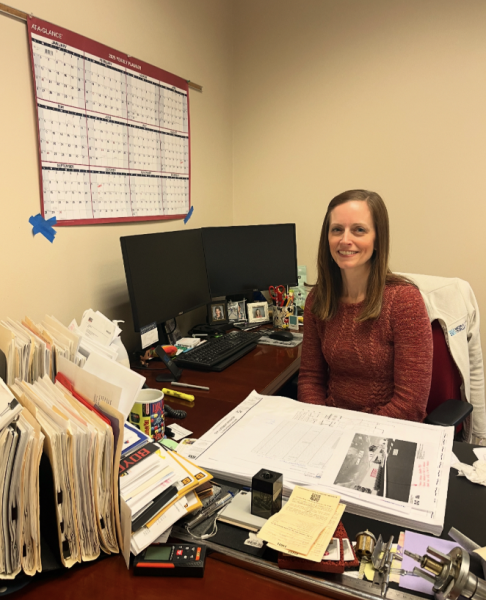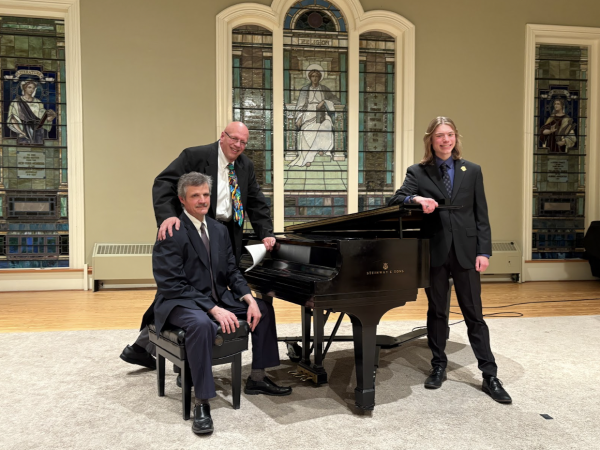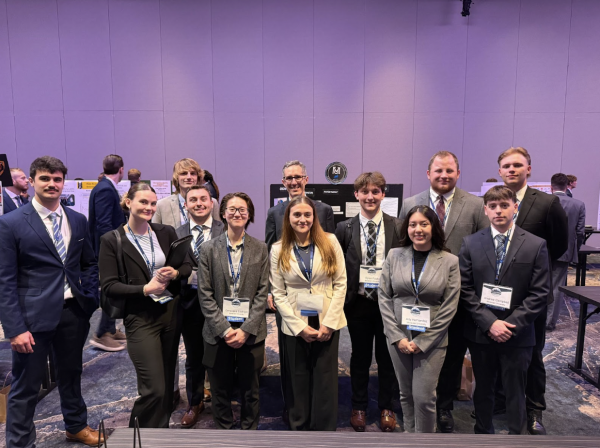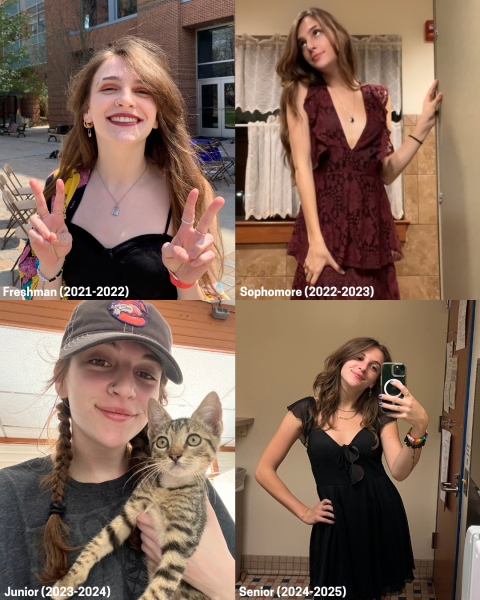A Spectrum of The Mind: Neurodiversity at Moravian University

On Friday, Mar. 21, 2023, DNA, or Disability & Neurodiversity Advocacy, held an informative forum and discussion panel covering neurodiversity in a societal and institutional context. The club, advised by Dr. Laurie Kahn, assistant professor of education, centered mostly on autism in honor of National Autism Awareness Month and provided historical rudiments on autism diagnoses.
Neurodiversity refers to a mental medley of cognition, sociability, processing, and learning, adopting a “no two brains are alike” mentality. This term dismantles a standard for a brain to function “properly” and embraces diverse neurological patterns.
First coined in 1988 by Australian sociologist Judy Singer, the term didn’t become popular until The Atlantic’s 1998 article “Neurodiversity: On the Neurological Underpinnings of Geekdom” publicized the term for the general public and made its rounds in psychological discussions. This article includes relevant terms such as neurologically typical, now coined as neurotypical, and takes on a tongue-in-cheek approach when it comes to favoring neurodivergent eccentricity over neurotypical “superiority.” Its statement on how “Neurodiversity may be every bit as crucial for the human race as biodiversity is for life in general,” opts for a societal understanding of diverse cognitive behaviors and values a spectrum of neurological functions.
Neurodiversity includes autism, ADHD, dyslexia, or Tourette’s syndrome and disrupts the binary of neurological “normalcy.” You would refer to a person with one of these syndromes as neurodivergent. Differing from neurodiversity, the term neurotypical refers to someone with “typical neurological development or functioning.”
The “typical” root of the word, according to Dr. Kahn, is meant to replace degrading, problematic synonyms such as “normal” which can establish harmful rhetoric on neurological differences. Neurodiversity engenders solidarity in different forms of communication and social patterns, normalizes accommodations, and creates solaceful spaces for those with disabilities.
Since April is National Autism Awareness Month, the conversation naturally shifted to autism and its troubled history from the first diagnosis ever to the modern ways of understanding autism.
Autism is not a disease but rather a structural difference in the brain. In 1908, Swiss psychiatrist Eugen Bleuler developed the psychic “ailment” of autism as a withdrawal from the self, difficulty with social interaction, and the persistence of echolalia (repetition of words spoken by another person); however, most of the criteria that he defined aligned more with what we know as schizophrenia as he attempted to redefine the term dementia praecox (precocious madness) coined by German psychiatrist Emil Kraepelin.
Ukrainian psychologist Grunya Yefimovna Sukhareva thoroughly observed autistic traits in children in her 1925 research assessment, her detailed descriptions and analysis, unfortunately, being overshadowed and uncredited by Hans Asperger.
In 1943, Austrian-American psychiatrist and physician Leo Kanner developed his theory of “classic autism.” Although some of his observations were flawed such as concluding that autistic individuals are plagued with “self-centered thinking,” he made rightfully neutral conclusions on autism as a “developmental condition.”
Photo Courtesy of OccupationalTherapy.com
Hans Asperger defined a superior intellect and memory as differing from autism, coining the condition we know as Asperger’s syndrome. His problematic observations were highly sexist and gave way to what we know as “high-functioning.” The term “high-functioning” has been discarded in recent years for its inaccuracy in the autism diagnostic process and suggests that “high-functioning” autistic individuals are able to “blend in” better to fit societal standards. “High-functioning” versus “low-functioning autism” also has its roots in Nazism and the T-4 Euthanasia program, where high-functioning individuals were allowed to live even if they were put to work, and low-functioning individuals would be executed.
In 1962, the National Autistic Society developed the puzzle piece symbol for autism, a symbol that would be used by Autism Speaks in 2005, a nonprofit coalition plagued with ableist controversies.
Despite promoting autism awareness and their mission of helping autistic people “reach their full potential,” Autism Speaks has openly spread ableist rhetoric from their insincere 2009 “I Am Autism” commercial to the need to find a “cure” for autism. Its funding usually did not go to aiding or accommodating autistic people but went to pointless biomedical research instead. It even took the organization a decade and a sleuth of controversies to finally put an autistic person on its leadership board.
According to Dr. Kahn, it is detrimental to have such a powerhouse organization spread severely misguided rhetoric on the people it is meant to aid and plant seeds of ignorance regarding autism.
When it comes to neurodiversity, many questions arise. How do we create affirming spaces for neurodivergent individuals? How can we shift our language and attitudes away from harmful ableist rhetoric? Awareness and acceptance are obvious gateways to dispelling erroneous ableist notions, but how do we go about achieving them?
Firstly, we need to see neurodiversity as a spectrum; for example, individuals on the autism spectrum have different symptoms, but no one should be seen as more or less autistic because of these symptoms. This is why there is such a demand to remove high-functioning and low-functioning from the autism lexicon because it gives a “more or less” standard for autistic individuals and implicitly promotes being able to blend in better in society.
Campaigns such as the Autism Speaks “Light It Up Blue” campaign have tried (and failed) to bring awareness to autism. However, it is flawed in its execution, with the blue representing sadness towards autism as a “disease” or being representative of autism having been historically categorized as a men’s only condition.
Instead, the autism community, specifically the group Autistic Union, embraced the “Light It Up Gold” campaign. This campaign uses the periodic element of gold, Au, which also happens to be the first two letters of autism; additionally, gold is symbolically valuable and represents the value that autistic individuals bring.
Instead of the traditional puzzle piece as the emblem for autism and neurodiversity, many organizations, including DNA, have gravitated towards the rainbow infinity symbol. Historically, the puzzle piece has had negative associations with it, being seen as a sign of “imperfection, incompletion, uncertainty, difficulty, the state of being unsolved, and, most poignantly, being missing,” and being a symbol of isolation. The infinity sign, on the other hand, epitomizes the need for unity, and the rainbow is inclusive of a spectrum of neurodiverse experiences.
During the Q&A panel, Dr. Jane Berger, associate professor of history, asked about the “people first” language that many have strayed away from.
Shayla Borger, co-president of DNA, answered this question by saying that how your brain is structured makes you who you are, at least partially. Saying “person with autism” detaches the person from the condition that makes them who they are, as if it is something to be ashamed of.
Additionally, Dr. Kahn elucidated on the “people first” language adding to negative associations of autism and straying away from such language to promote an inclusive agenda that recognizes a person’s disability rather than degrades it.
For National Autism Awareness Month, this forum delineated the intricacies of autism and neurodiversity and gave a crash-course history of autism diagnoses. Autism is a neurotype, not a disease. It is simply a developmental condition that doesn’t hinder a person’s value nor make them inferior based on how well they are able to “fit” socially. Dispelling damaging rhetoric and archaically ableist language can bring more awareness to autism but more importantly, acceptance is optimum. Awareness is recognizing that someone has autism; acceptance is the inclusion of and connection with autistic people.






